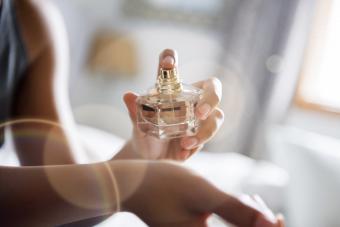
Few looks are as iconic as mime makeup. The exaggerated features and bold contrasting shades allow performers to communicate all without the use of words. Whether you are interested in the art of live performance, want to test your skills, or have a special occasion coming up, it is possible to create this classic style, and personalize it with creative touches.
How to Apply Mime Makeup
There is something undeniably exciting about this type of makeup application. It highlights dramatic features and facial expressions with ease - making it far easier to share stories with an audience. The basic essentials of this theatrical look include a white face, black details, and a drawn-on mouth. To achieve it yourself, start by:
- Having a clean and prepped face. Wash your skin with a gentle cleanser, pat it dry, and moisturize. Men wishing to create this look should shave beforehand for a smooth and seamless application of stage makeup.
- Apply white face paint all over. Use something like Ben Nye Clown White (sold for about $13), or use cake or grease makeup (also popular options) on a small sponge, then stipple on the product. This may take one or two coats depending on your skin color and the pigmentation of the paint you use. Remember: it should only be applied to the face. Do not bring the product down the neck!

- Use a large fluffy brush or sponge to apply your setting powder. This step will lock in the color and help it to last all day - even underneath hot stage lights. While a white powder is ideal (to really white out the face), a translucent one can also be used.
- Draw eyebrows above your natural brows using black face paint, an eyebrow pencil, or liquid eyeliner. The placement may vary depending on how surprised you want your mime to look. Your brows can be worn thick, thin, or somewhere in between. Put your own creative spin on it!
- Use black eyeliner to add definition to the eyes. There are many ways to go about this, depending on personal preferences and what you want the mime to express. Some options include a French-inspired star design, a single teardrop, or a triangle.

- Layer on a coat of mascara to draw more attention to the eyes. This step is optional but it can give your finished look a little more drama.
- The lips can be left white, outlined in black, or have a design, like a bow or heart shape. The choice is yours! If you opt to include a pop of color (so there is more focus on the face), use red lipstick with a lip brush for precise application.

- Take your setting powder and give your face one last dusting of product. This will make sure everything is set and secure.

There are many helpful videos online if you are struggling to get the hang of the basics. (These are also great if you are searching for a little inspiration.) The YouTube video below on Mime Makeup for Halloween highlights just how far you can take this dramatic style!
Optional Extra Steps
There is no right or wrong way to wear mime makeup. The key is to have the basics down pat and go from there. So, once you have your white paint, black eyebrows, eyes, and mouth, you can easily add on. Ideas you might want to try:
- Throw on a pair of false eyelashes
- Put some color on the cheeks
- Look into creative details (like geometric shapes, dots, and so on)
Once you have both a painted face and a costume, you will be ready to entertain.
The History of Mime Makeup
This type of performance art has been around for many years. Its origins date back to Greek times when tragedies became popular. Since then, various versions have existed in Rome, France, Germany, England, and Japan. According to The Evolution of Mime, it reached new heights of popularity in the nineteenth century, with the emergence of Jean-Gaspard Deburau and Joseph Grimaldi. In the twentieth century, Marcel Marceau brought the art of mime to an American audience and even started his own school for pantomime.
The actual makeup style is largely thanks to the work done by Jean-Gaspard Deburau. He popularized the idea that a mime should be a silent figure with a white face.
What Each Feature Represents
There is symbolism behind every aspect of classic mime makeup. According to the Silent Storytelling: The Art of Mime, by The Mime Company of Northwestern University, the white has to do with creating a mask. It takes away the personal identity of the performer, which makes it easier to tap into the emotions of the character.
The eyebrows are a symbol of expression. They represent the awe you feel when you see something for the first time. In contrast, the tear drop on the cheek (which is often included) represents a sense of loss. The mime is telling two stories simultaneously, representing both innocence and experience.

Create Your Own Mime-Inspired Look
Nothing is easier than transforming yourself into a silent (but never forgotten) part of history. Applying mime makeup can be straightforward and simple, or more complex, depending on your desired look. With a little imagination and creativity, you can put your own unique twist on this timeless style.







